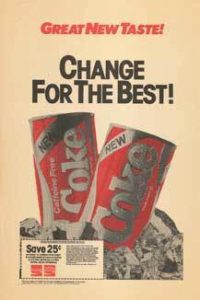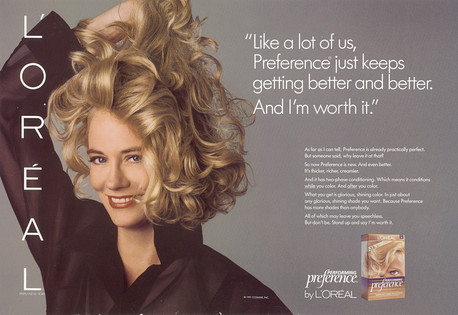One endearing quality about my sister when we were growing up was that she sometimes cried at TV commercials. There was one in particular where a large litter of puppies greeted children at their grandmother’s house that got her to well up. I was not surprised when, as an adult, she got a dog.
I teared up at commercials too when I was a child, and felt funny about it until I noticed her doing it.
I still shed tears at TV ads once in a while. And not just when they are maddeningly bad advertising.
Marketing that packs an emotional appeal is powerful. Brands that successfully tap the emotion they evoke stand apart from their competitors and establish a connection with their audience.
Consider some of the most memorable taglines:
“Plop plop fizz fizz, oh what a relief it is.”
“Just do it.”
“Because you’re worth it.”
“The ultimate driving machine.”
“Pepperidge Farm remembers.”
“This is your brain. This is your brain on drugs. Any questions?”
“The happiest place on earth.”
“Virginia is for lovers.”
“What happens in Vegas, stays in Vegas.”
“Calgon, take me away!”
In a notable twist, marketing is something the government has actually done well for recruiting purposes:
“We’re looking for a few good men.”
“Be all you can be.”
“It’s not a job. It’s an adventure.”
To make a memorable and lasting brand impression, it is not enough to understand how your brand serves your customers practically. For your brand to soar, you have to understand how it serves them emotionally.
And you have to get the emotion right for your message to resonate.
One tagline that strikes me as off and risky is “I’m lovin’ it.” I, and many McDonald’s stockholders, are most definitely not lovin’ it.
Marketing history is littered with emotional branding misfires. The standout in this category is New Coke, which was a sweeter version of the nearly hundred-year-old secret formula when it launched on April 23, 1985. Advertising for the new Coke proclaimed “The Best Just Got Better” and “Change for the best!”
 But customers did not want change. They were attached and devoted to the old Coke. The switch provoked widespread consumer protests and hoarding.
But customers did not want change. They were attached and devoted to the old Coke. The switch provoked widespread consumer protests and hoarding.
On July 11, 1985 Coca Cola management relented and brought back the old Coke as Coke Classic. Now the only place you can find New Coke is on e-Bay.
And it’s still unopened.
On Coca Cola’s website, the company claims that those who chastise its New Coke decision forget the context – that the company had watched its market share slip to Pepsi over 15 years. New Coke was an effort to stem the tide and represented what CEO Roberto Goizueta called “taking an intelligent risk.”
I call it a company so desperate to reverse its share slide that it never explored consumers’ emotions related to the brand.
Other, more recent emotional marketing misfires include:
- Huggies’ campaign in 2012 showing Dads as inept caregivers;
- Bic for Her pens in pink and purple and “designed to fit comfortably in a woman’s hand”; and
- Apple’s U2 album giveaway that struck customers as “worse than spam.”
What the marketers above thought would be funny, special, and generous instead offended, mocked and felt intrusive.
Miscalculating customers’ emotions is costly not only in financial terms but also in goodwill and trust. Customers buy your brand because they think you understand them. A misfire is a loud pronouncement that you don’t.
So how do you get the emotion right?
- Talk to your customers about their experience with your brand. When do they use it? How do they use it? What prompts them to think of it?
- Identify the emotion your brand delivers. Is it relief? Empowerment? Control? Confidence? Nostalgia? Reassurance?
- Acknowledge and incorporate the emotion in your marketing communications.
- Test your marketing communications before launching them. Make sure consumers perceive the message as you intended or tweak it until it resonates well.
Like the affinity you feel for a good friend, emotional branding can make a big difference in the way customers feel about your brand vs. a competitor. Take the time to infuse your marketing with emotional appeal to make that connection and grow your brand.
Do you recall a TV ad that moved you emotionally? Please share it in the comments.
If you liked this post, you’ll love the next one.
To have future posts sent to your inbox...

